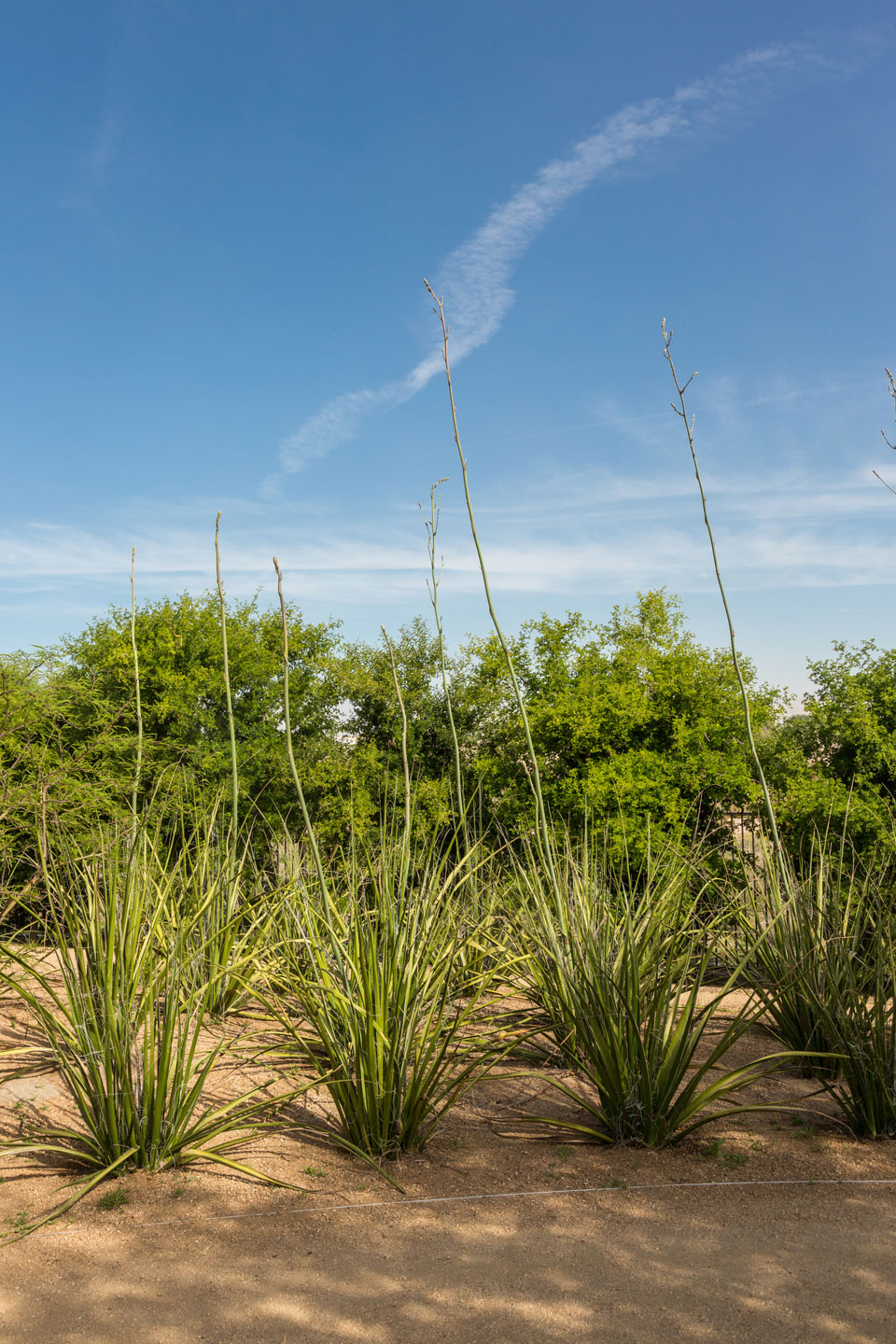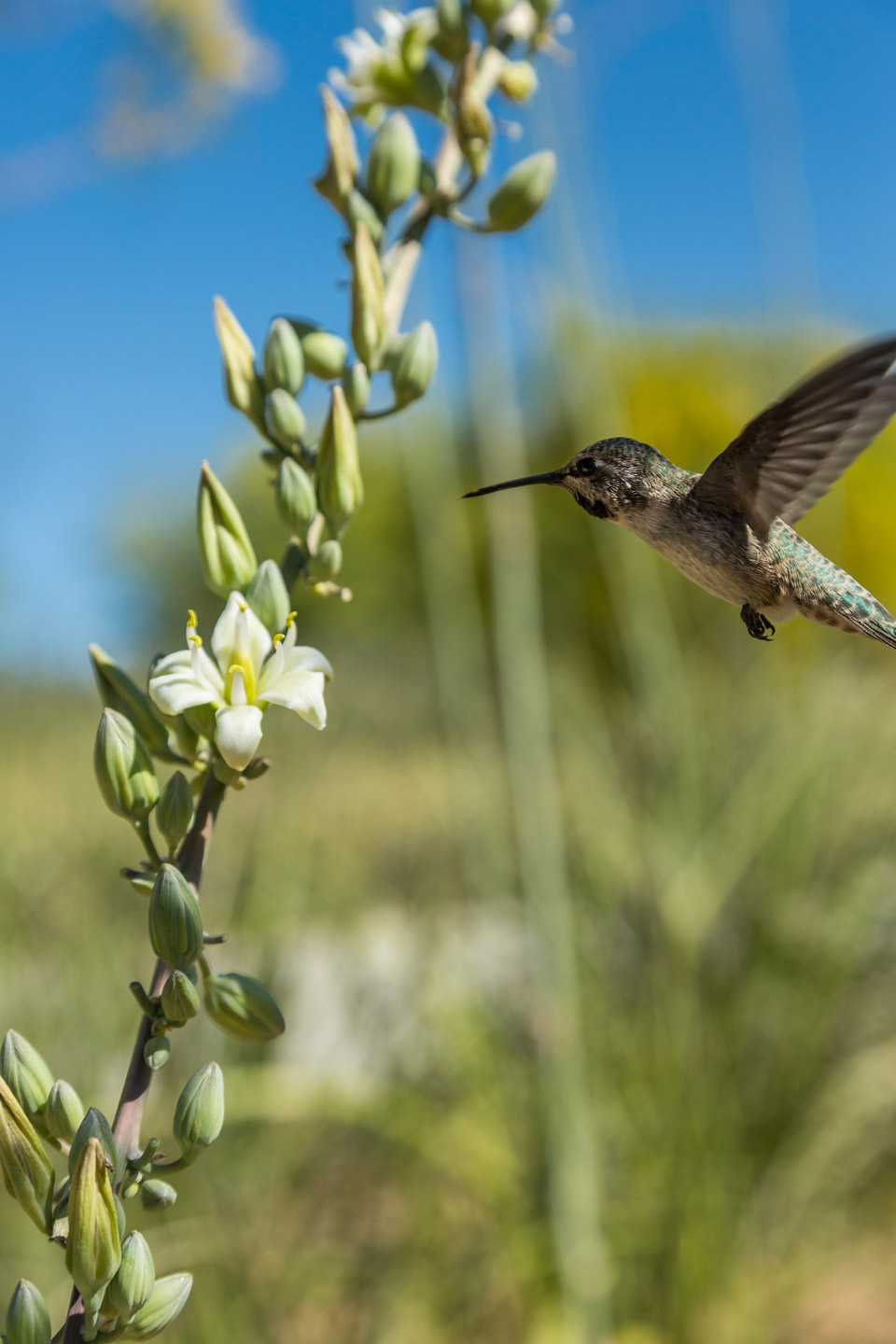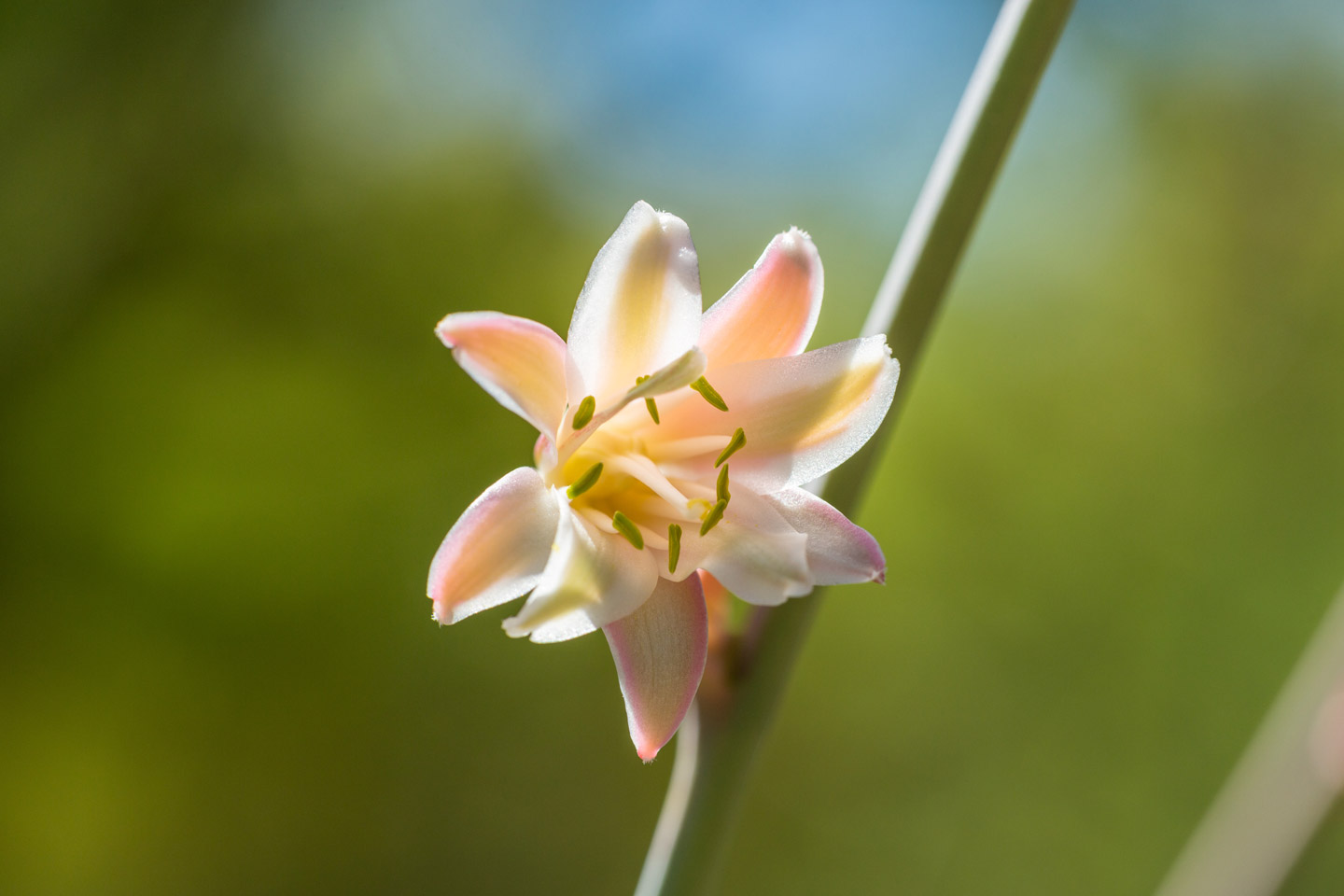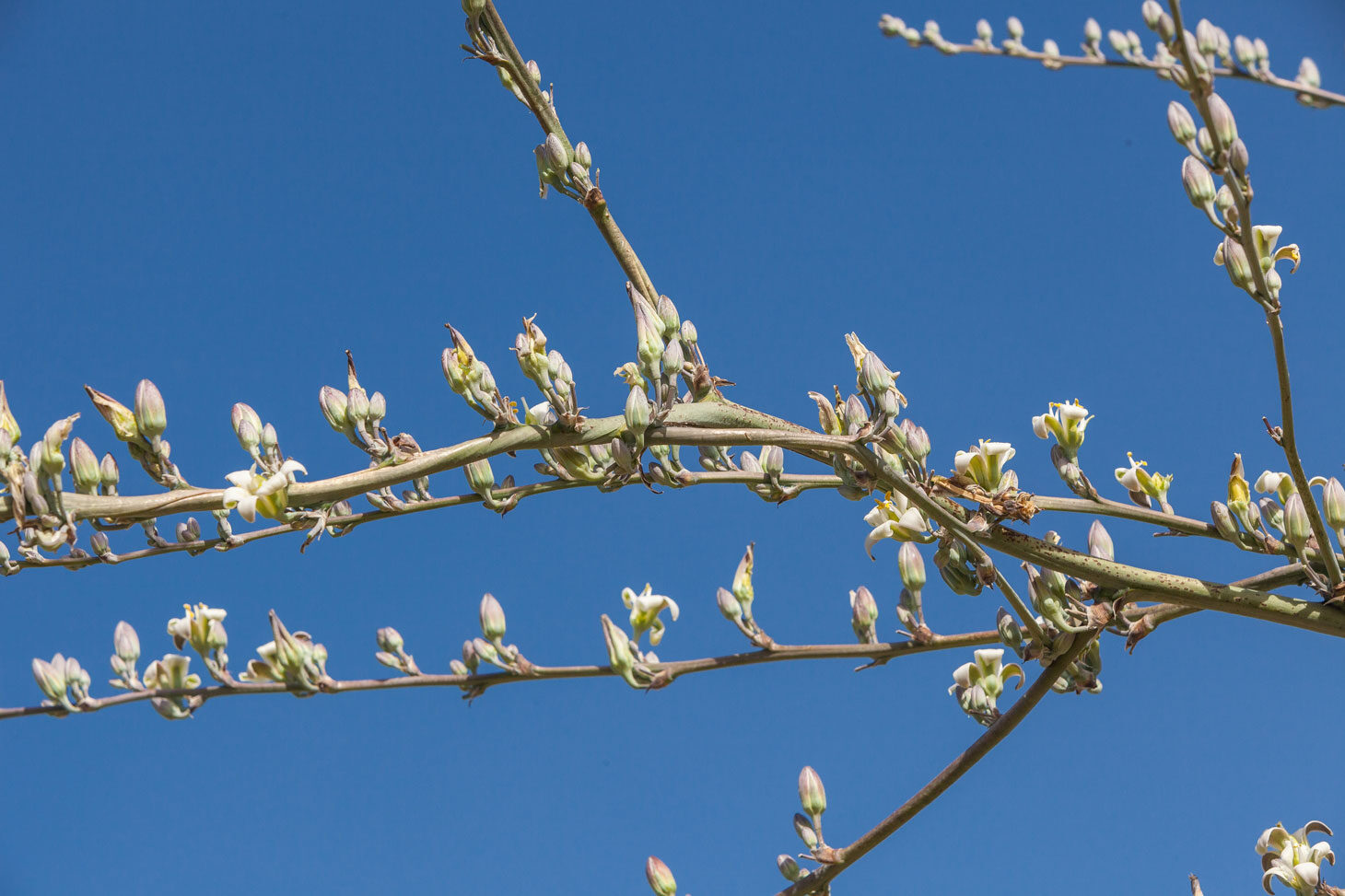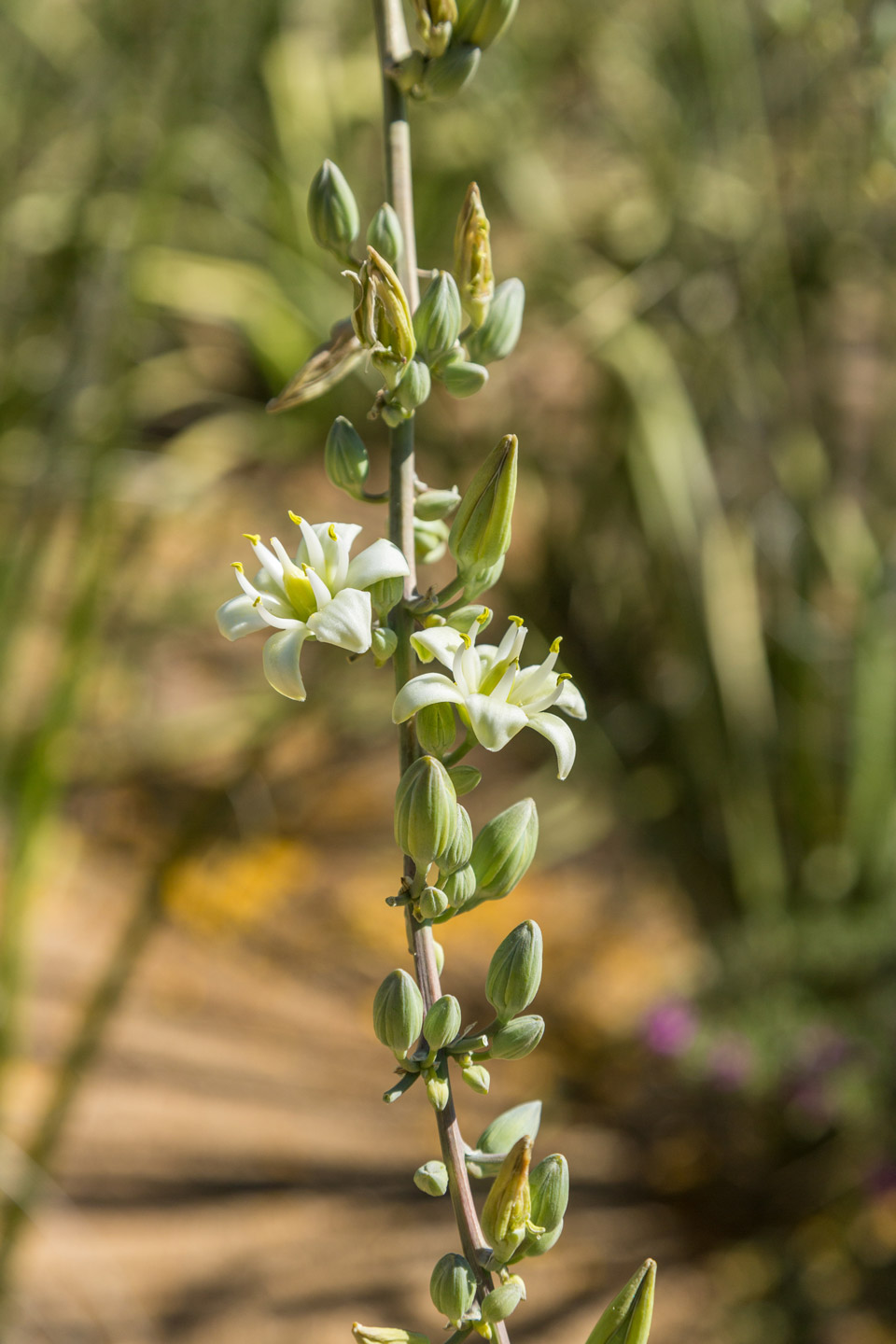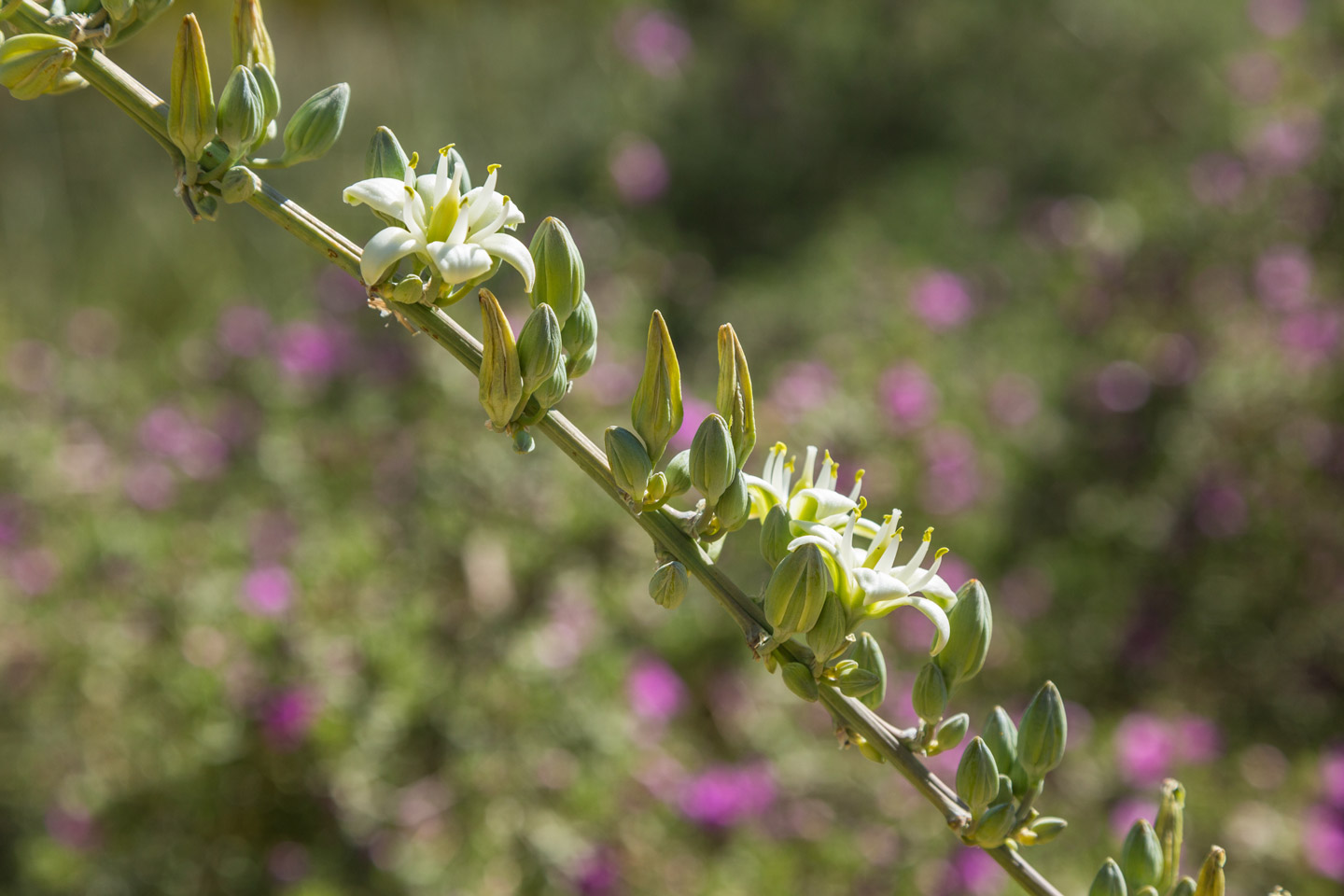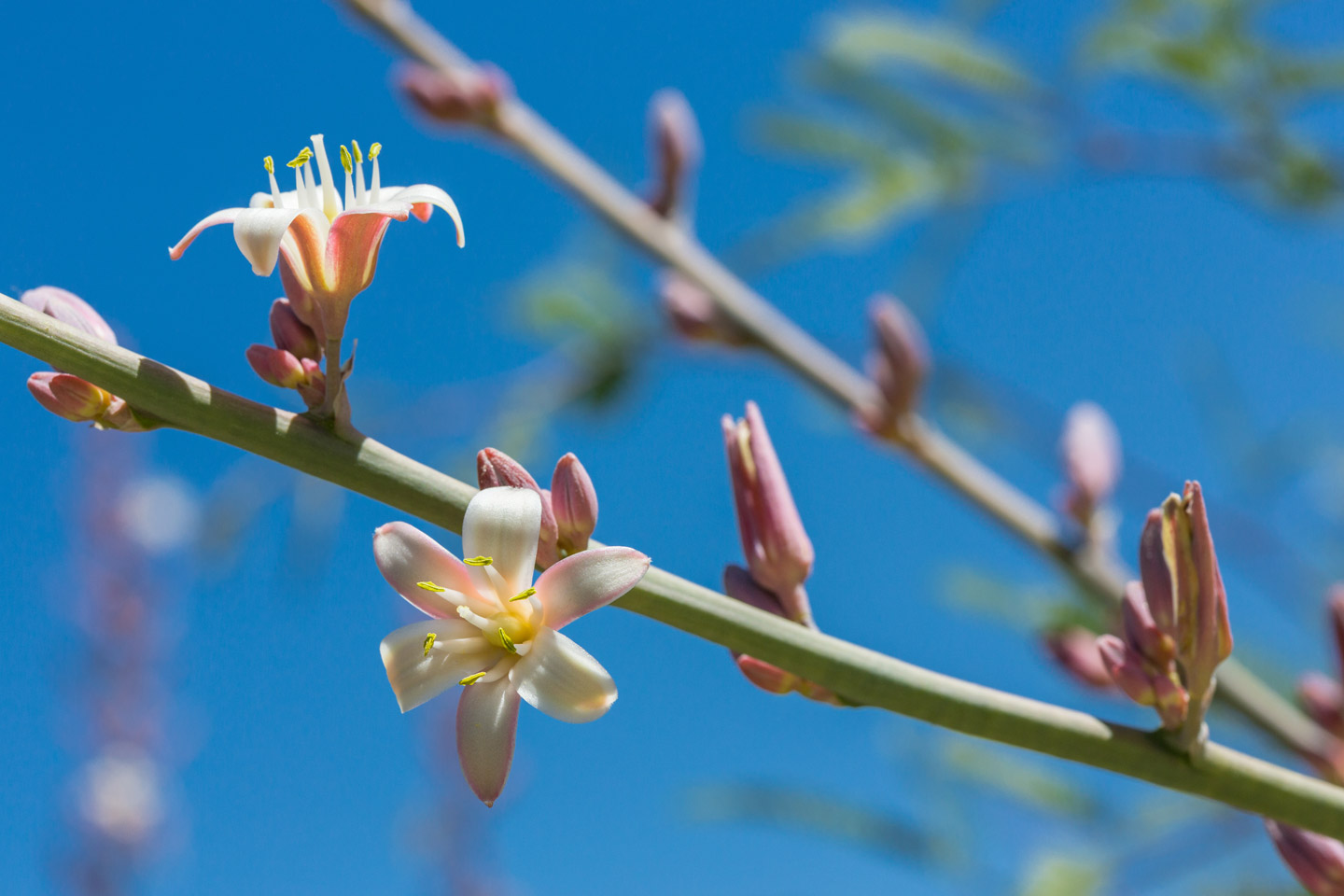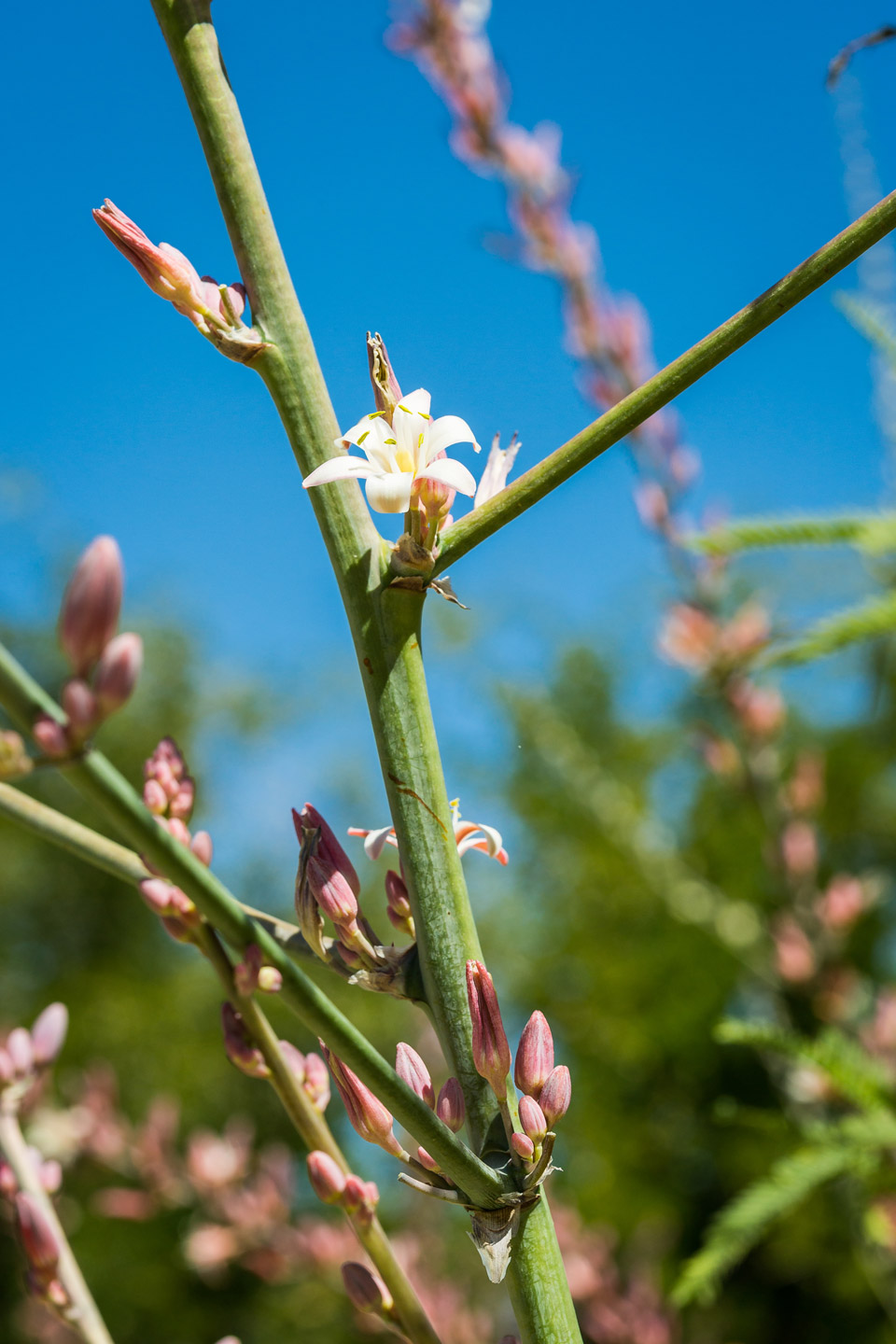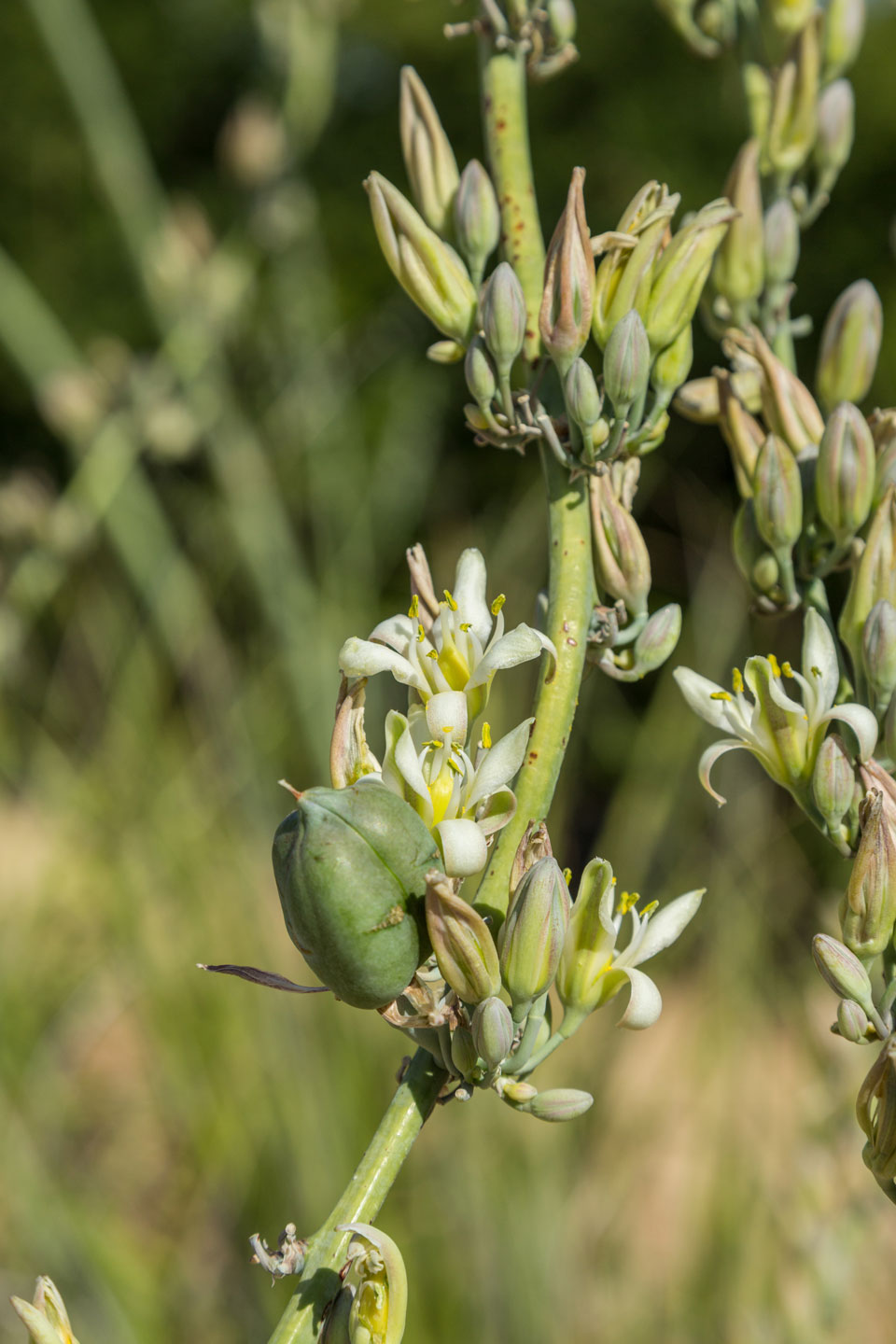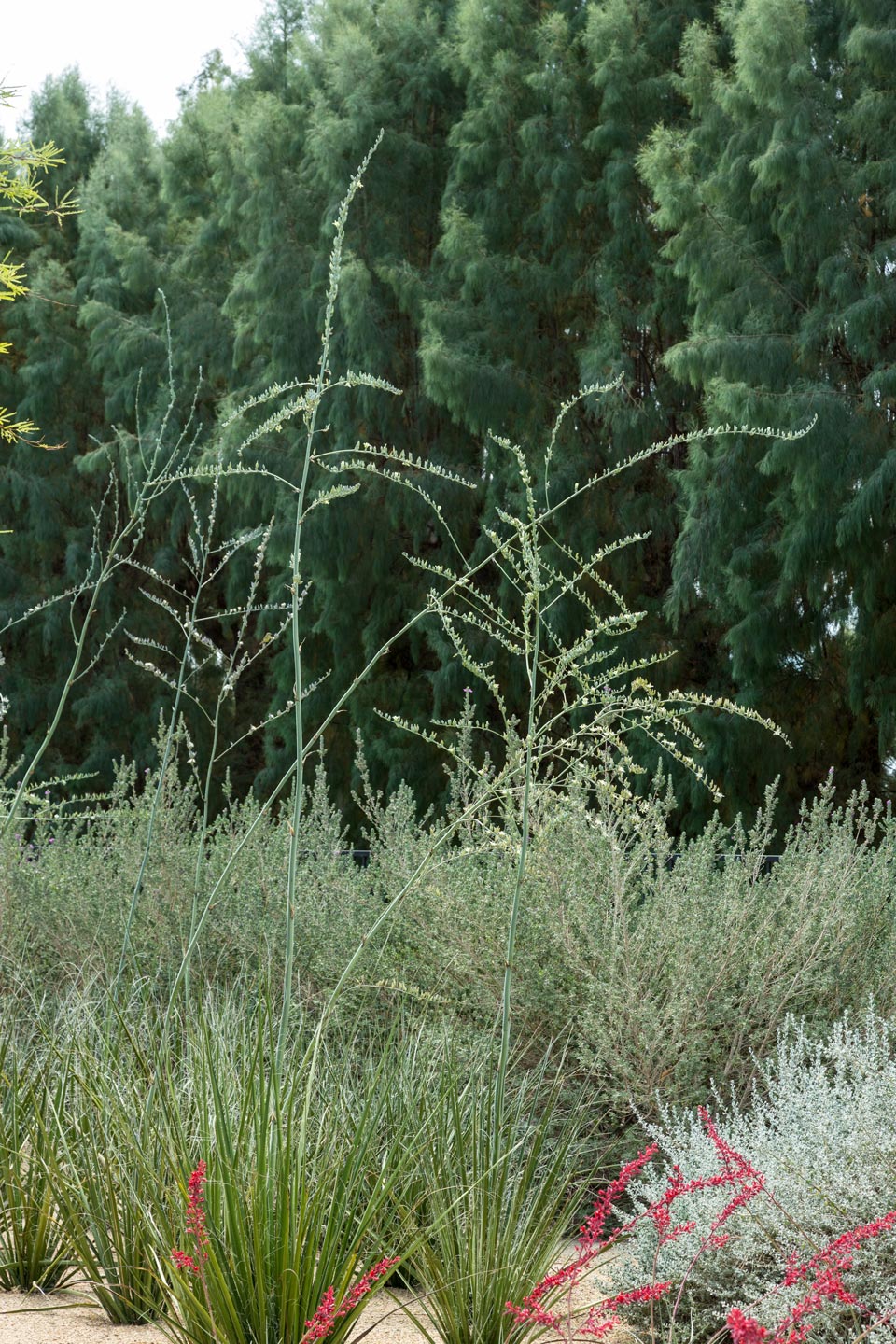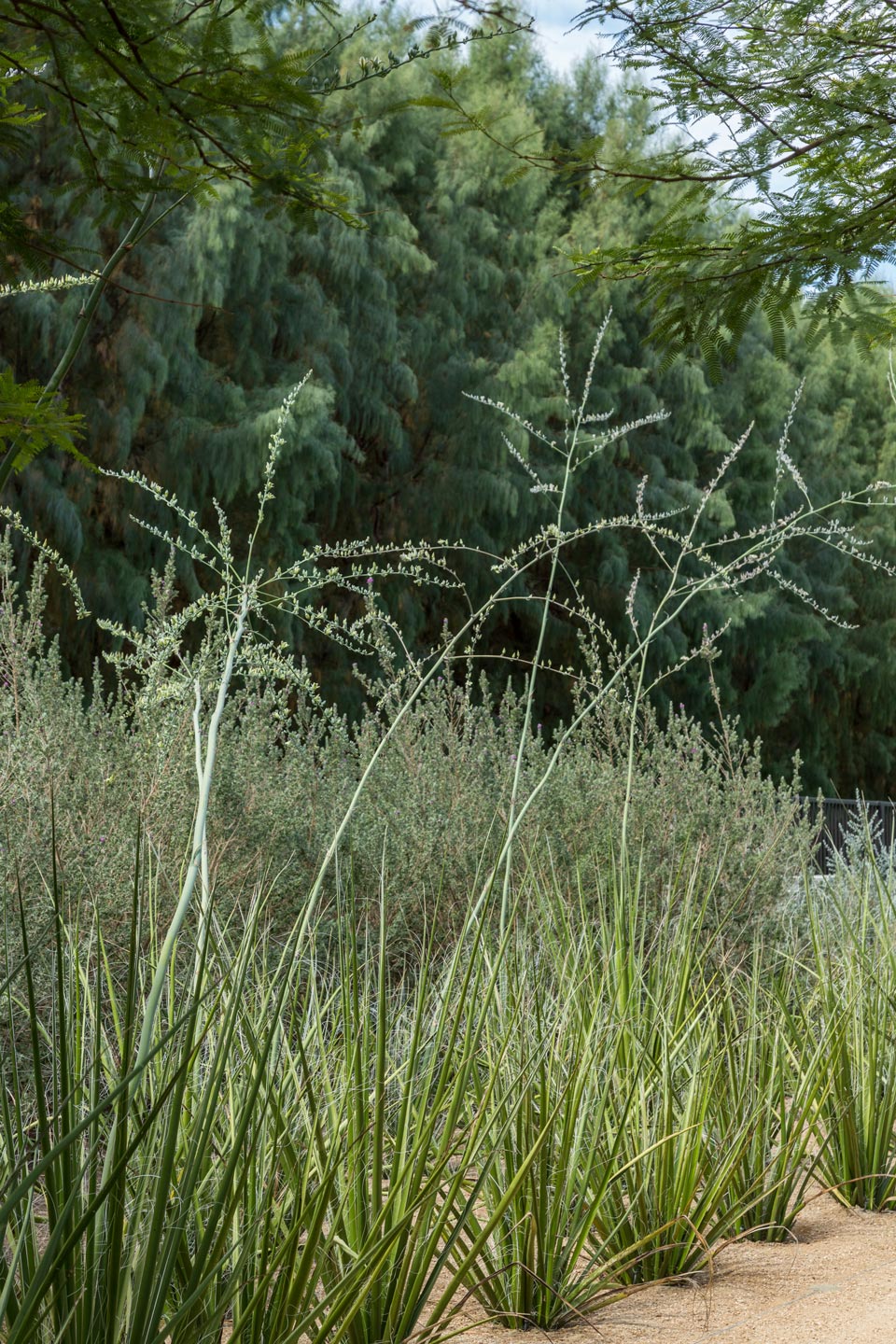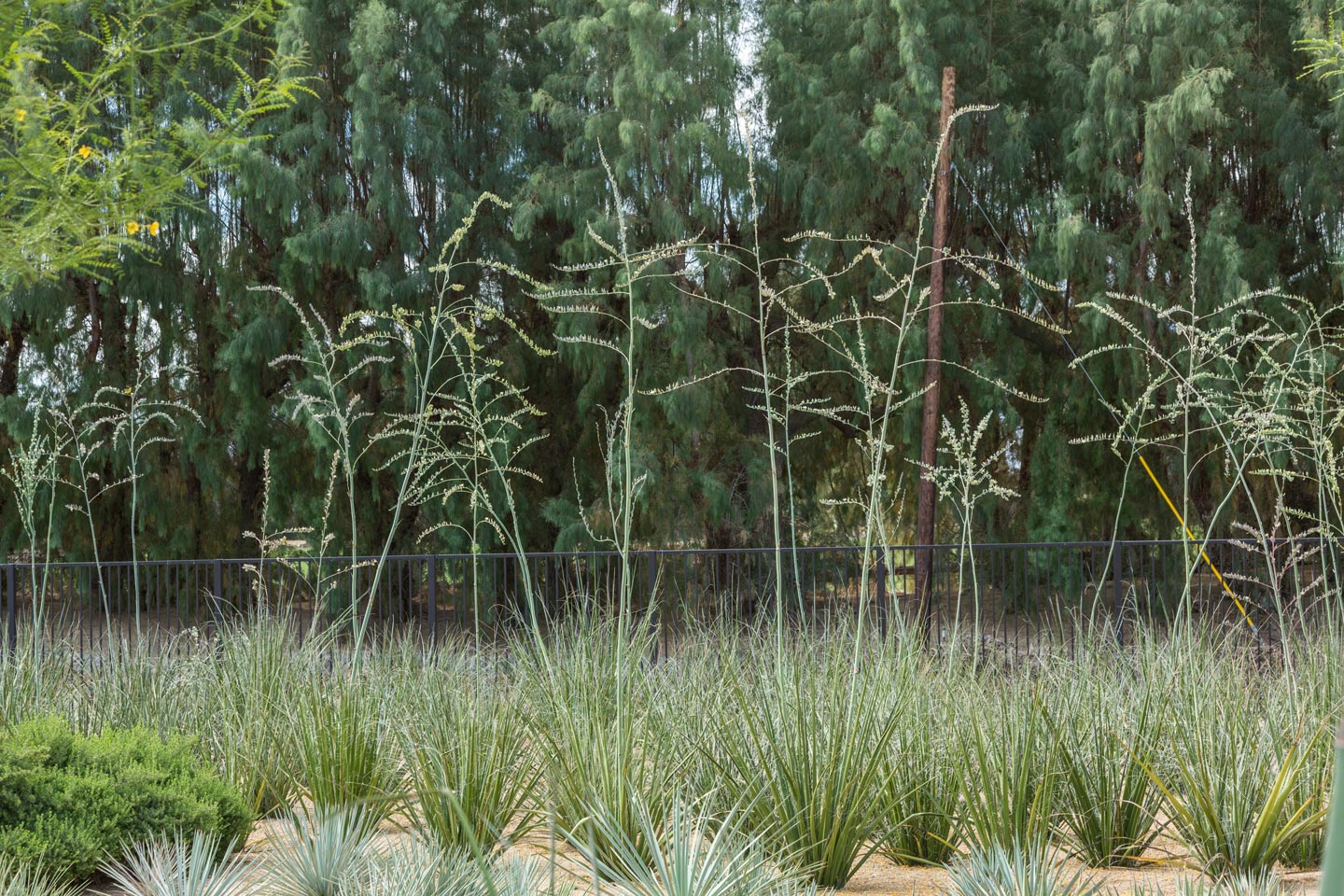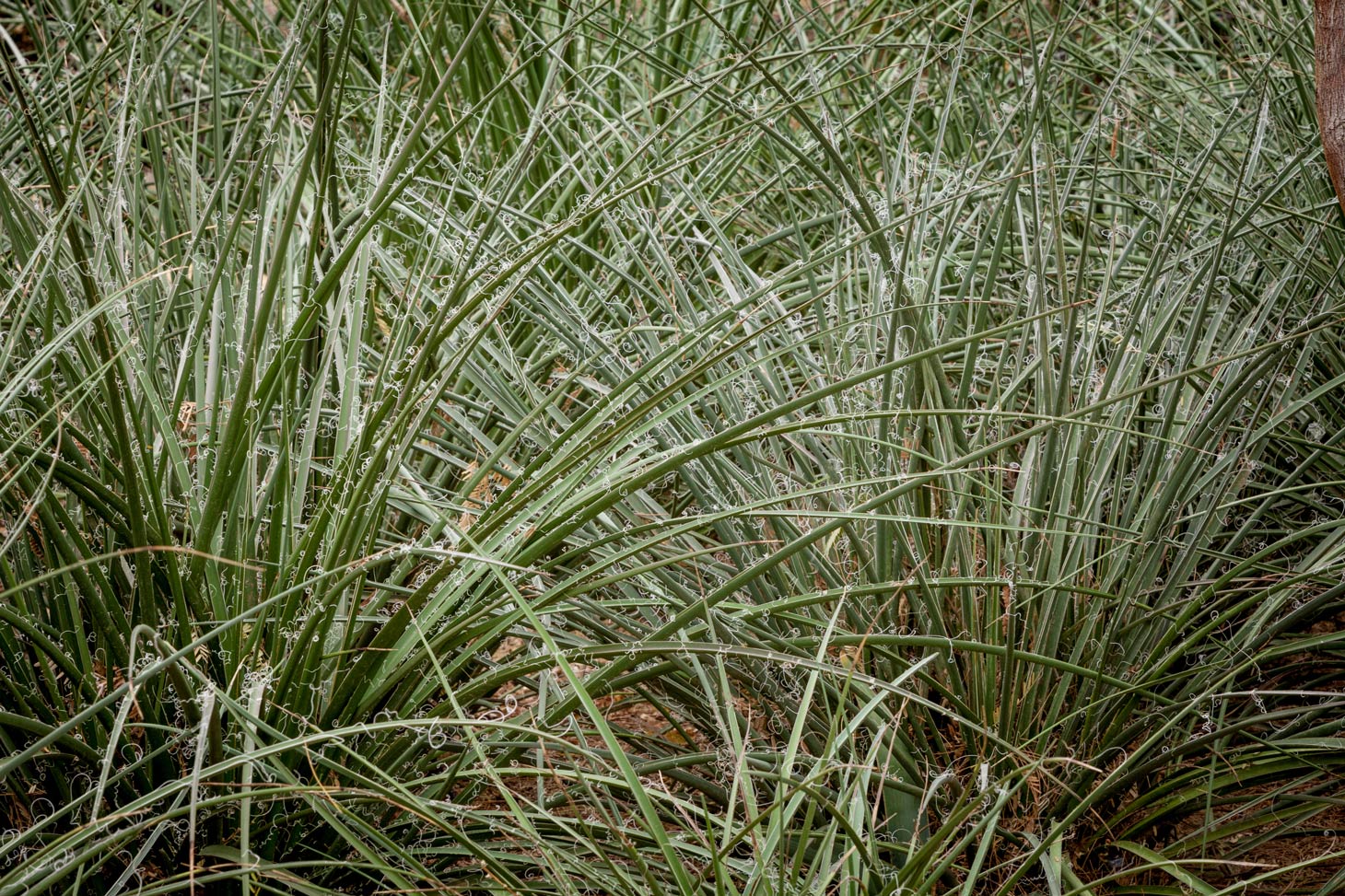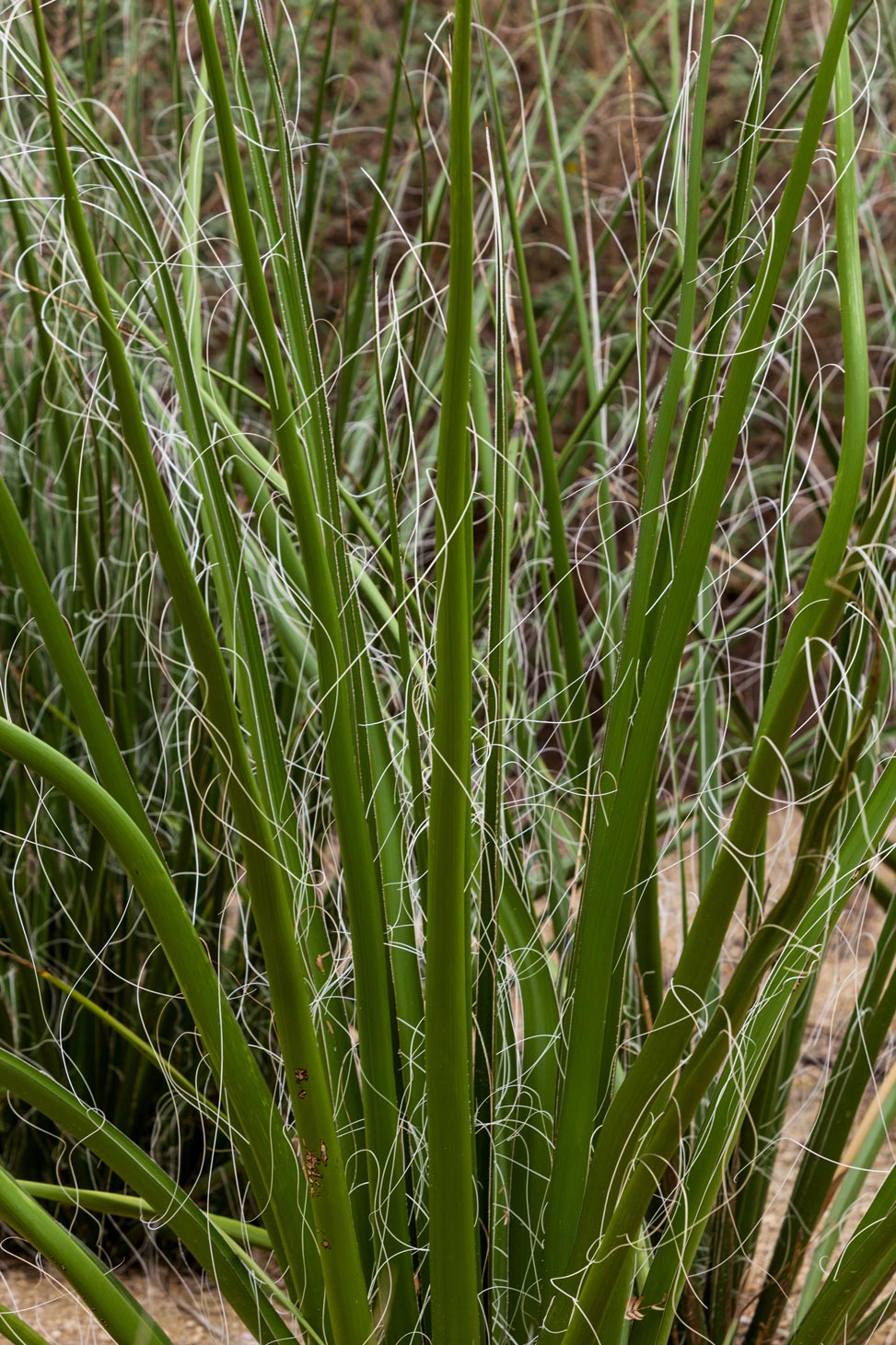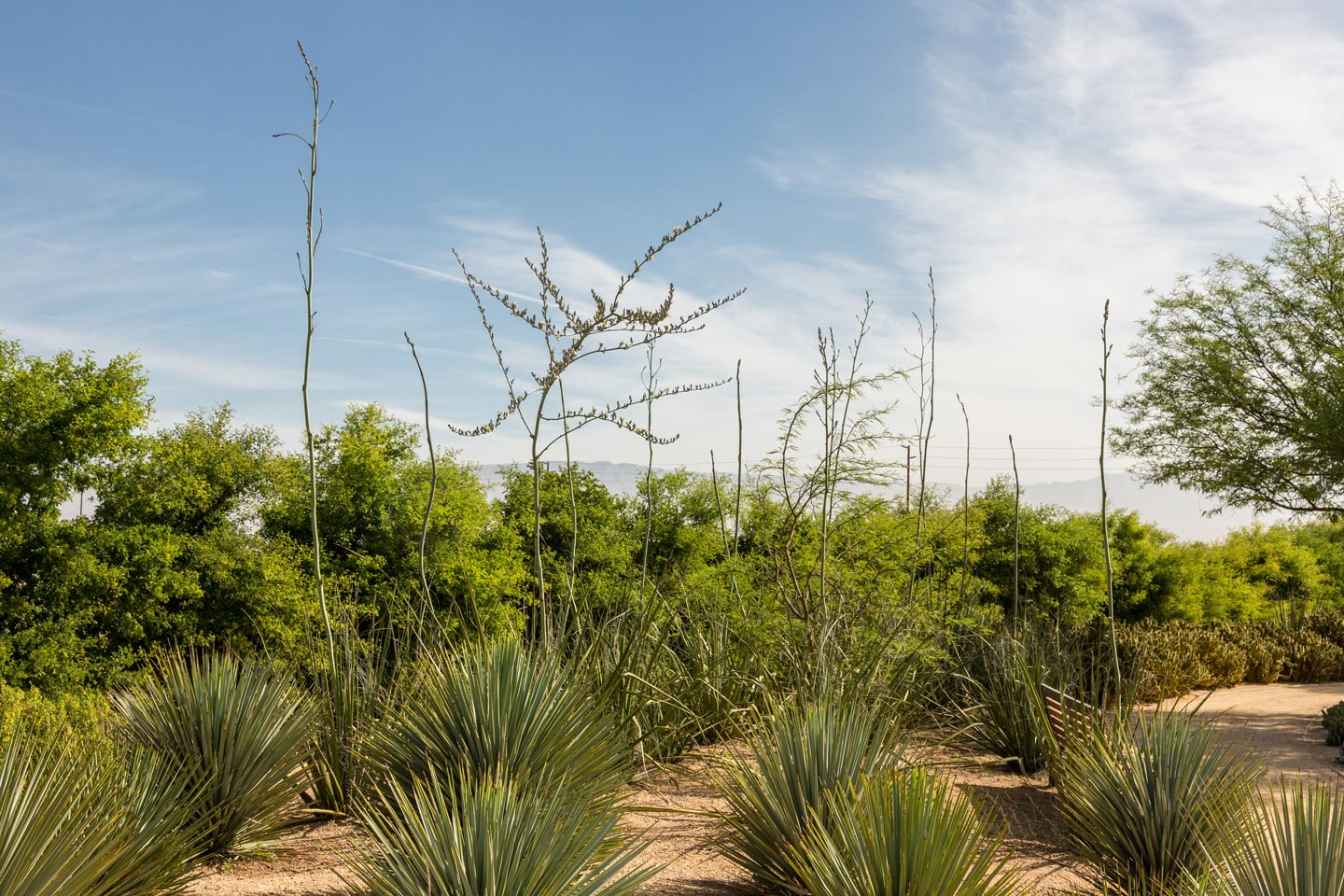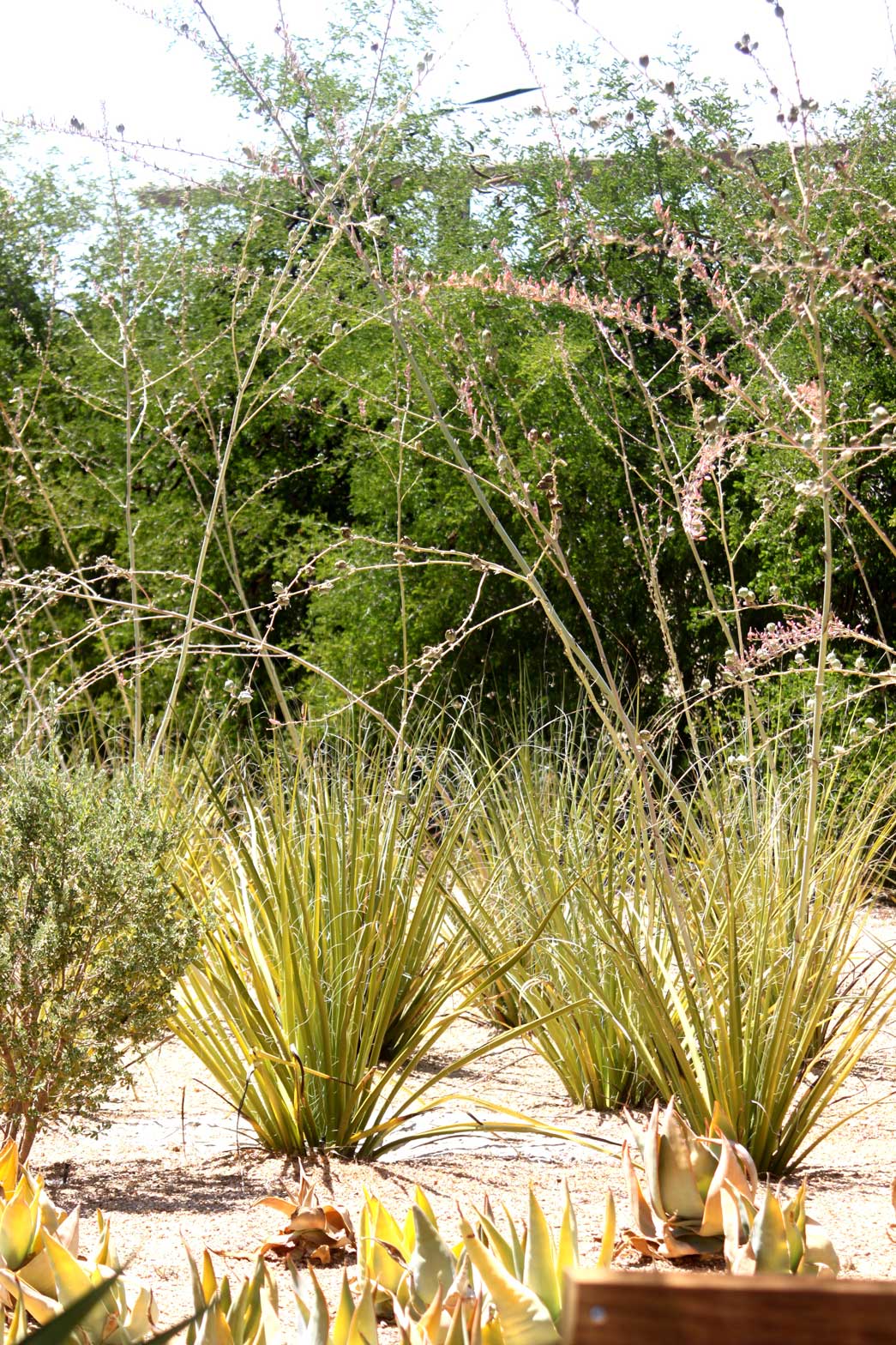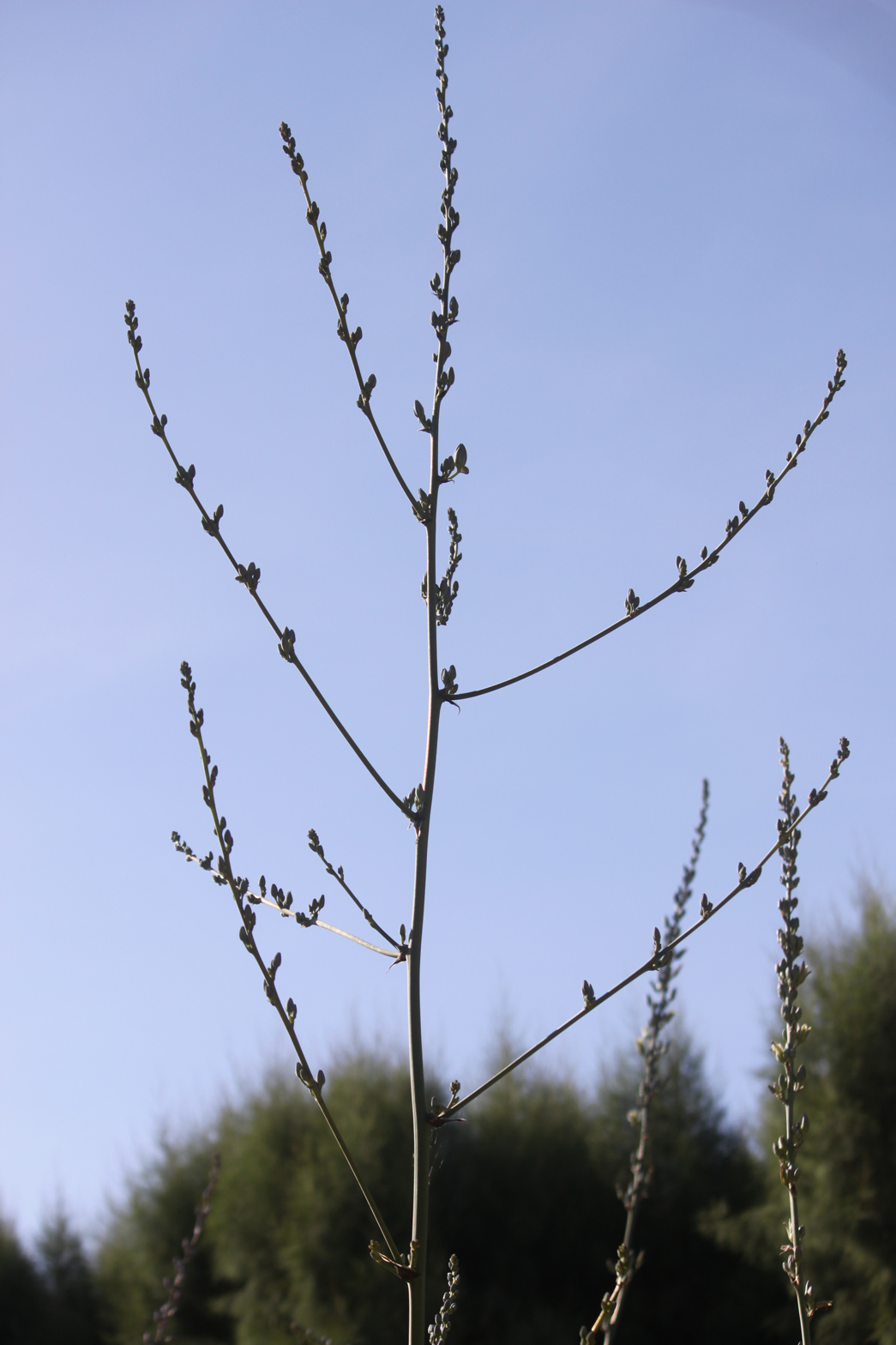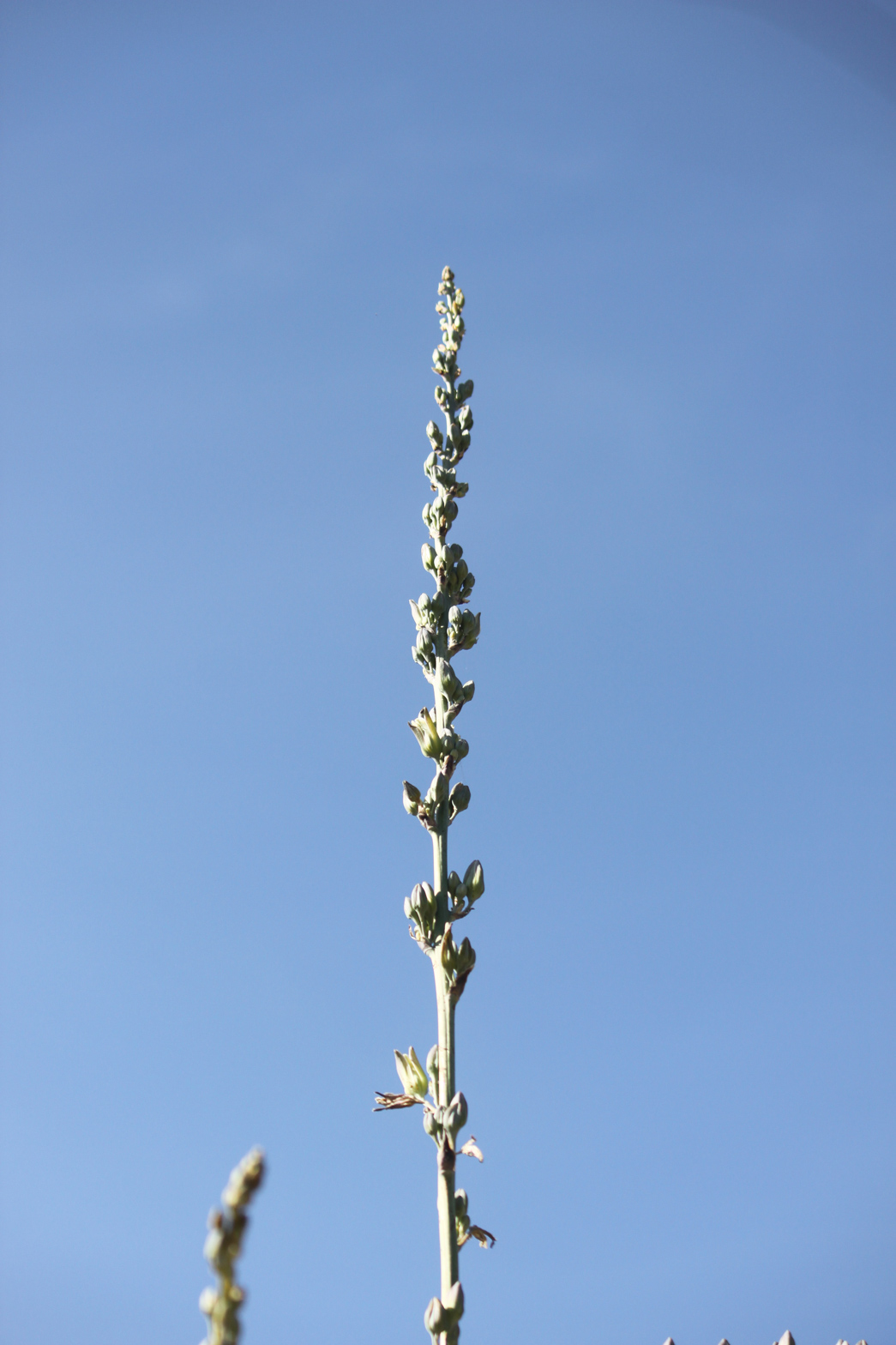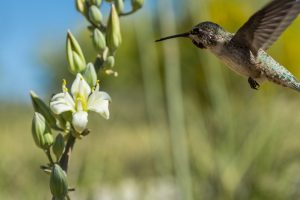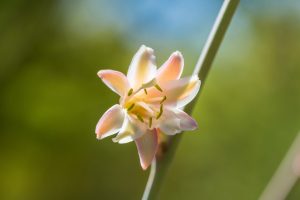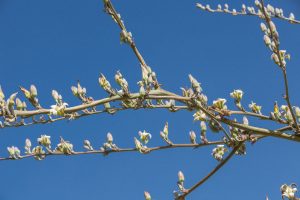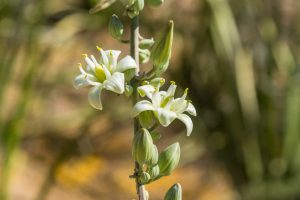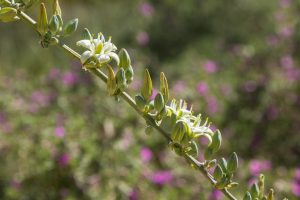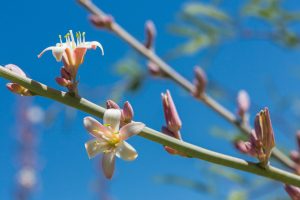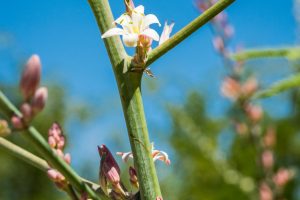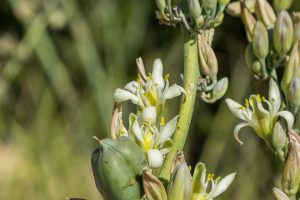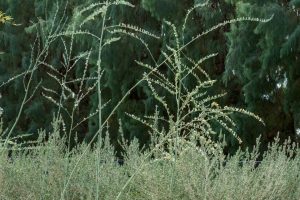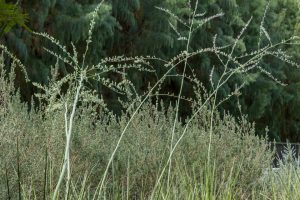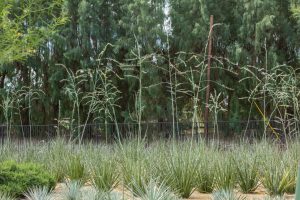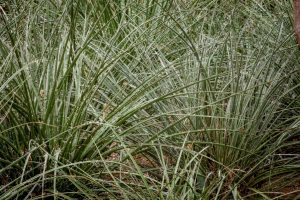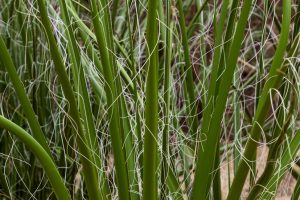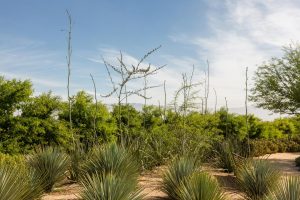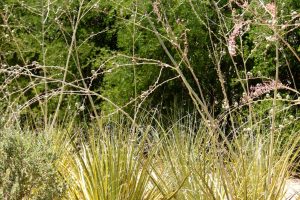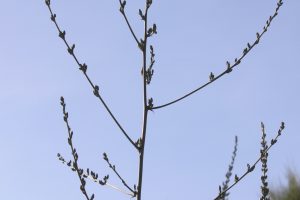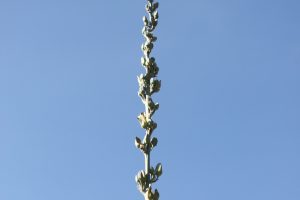The Giant Hesperaloe is the largest species of the genus Hesperaloe. This giant grows a rosette of crescent-like leaves that reach 6-feet high. For those not familiar with the differing desert genera that grow in a similar style, it can be difficult to distinguish them when not in bloom. Hesperaloe has one helpful indicator for identification, no this pattern is not exclusive to this genus, it helps identify it in these gardens. It is curving marginal filaments that pull away from the leaf edge, giving the appearance of coarse, white hair growing off the edges. If you see those, you then need to determine which species of Hesperaloe you are seeing in the gardens, which is easy. You simply determine, if it is in the 6 foot leaf range and if it is, you are probably looking at the Giant as there are only three species in the gardens, and they fall into the large, medium, and small categories.
Hesperaloe can expand by clumping additional tiny rosettes around the parent plant, as well as setting seed through flowering. They also readily cross-pollinate and hybridize. Giant Hesperaloe displays both pink and white blooming varieties, which grow on a flowering stalk called a raceme. The raceme can reach up to 16 feet. The creamy-white flower is associated with the original funifera species, but the other is a pinkish-toned hybrid. These are both pollinator favorites.
Hesperaloe in general appears to be popular with not only nectaring hummingbirds but also with opportunistic Monarch and Queen Butterfly caterpillars. When Hesperaloe is placed near milkweed beds, chrysalis of both butterflies have been found attached to its leaves. But chrysalis also has been found on agaves, so this is not an identifying feature.
